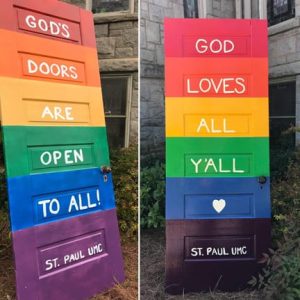By Ronald Lall
A few months ago I wrote an article about why Moreland Avenue fits the moniker a “corridor of crap,” and in that article discussed some of the policy and design reasons why corridors like Moreland have become corridors of crap – not just in Atlanta, but all over the United States. In this article, I will explore some options and ideas for transforming Moreland to a Complete to serve the needs of more than trucks and automobiles.
Complete Streets are those that are designed to be safe, comfortable and convenient for pedestrians, bicyclists, transit riders of all ages and abilities, motorists; and for movement of freight. There is no prescription for the built form of a Complete Street, as the context and setting of the street and changes along the length of the street all need to be considered in the design. The basic premise is that a Complete Street, whether in a rural, suburban or urban setting, should be safe, comfortable and convenient for all users.
It’s important to ask, “Why do we need Complete Streets?” In answering that question we might consider the following: At present, about 33% of Americans do not drive, 55% of Americans would prefer to drive less and walk more, 52% of Americans want to bike more than they do now, bike lanes are available for about 5% of bike trips, and 25% of walking trips take place on roads without sidewalks or shoulders, (according to the Bureau of Transportation Statistics). Consider also that 34% of Americans are obese and 33% are overweight, and that 7% of adults in Georgia suffer from asthma. Atlanta ranks as the 13th worst city for allergy and asthma suffers according to the 2011 Allergy & Asthma Ranking Report (www.asthmacapitals.com).
To be clear, a Complete Streets program does not contemplate designing interstate highways to accommodate pedestrians and bicyclists. Nor is a Complete Streets program about converting every city street to include broad sidewalks and dual bicycle lanes. That’s not the intent. The intent is to have a policy in place, which recognizes that our streets need to serve multiple uses/user groups, unlike present policies that allow unpaved streets to exist in developed neighborhoods, where there is no consideration given to alternative modes of transportation, and where innovative thinking, research and design on street use and function is not supported.
The first step in developing a Complete Streets program is to establish and adopt a Complete Streets policy. The policy can be in the form of legislation (state, city or county), or it can be an “endorsed” internal manual that provides consistent guidance to city employees (engineers and planners) on the procedures, designs, practices and requirements that would apply to Complete Streets projects. These procedures, designs, practices and requirements would embody the “new” thinking behind street design, which would make them safe, comfortable and convenient for a range of users and uses.
There are about 152 jurisdictions across the United States that have adopted policies or a written commitment to a Complete Streets initiative. Some of these jurisdictions include Miami, Charlotte, Louisville, Knoxville, the South Carolina Department of Transportation, the Kentucky DOT, the Florida DOT and the North Carolina DOT. Complete Streets legislation is being considered in Indiana, Missouri, New York, Texas, Vermont and Washington (www.completestreets.org).
In Georgia, Roswell, Decatur and Alpharetta have adopted Complete Streets policies. The Georgia DOT and the City of Atlanta have yet to adopt such a policy, or to initiate the process to adopt such a policy – and that’s where the opportunity lies.
If you are still reading, at this point, you might be asking, “So what’s involved in the City of Atlanta or the Georgia DOT putting a Complete Streets policy in place?” In North Carolina, the Board of Transportation (BoT) issued a staff directive to create their Complete Streets policy statement in January 2009. The BoT adopted the policy in July 2009 – a short six months later. The design and implementation guidelines are now under development and will be ready this March – by the time you read this article. From policy development to implementation guidelines in 24 months.
One of the reasons that North Carolina achieved so much in a relatively short time period is because of the policy work that had already been done in other states, which they reviewed and used in their policy development process, and by the City of Charlotte which had already developed and adopted a Complete Streets policy. Another reason was because of the political support provided by their BoT, which provided the marching orders, clear expectations and a time line to completion.
Now is the time for the City of Atlanta and GDOT to implement a Complete Streets policy, because of the opportunities presented by House Bill 277. The March 2011 issue of the Porch Press had an article on the intricacies behind House Bill 277, the transportation funding legislation that was passed last year. One project that could be included for consideration for funding is the establishment of a Bus Rapid Transit (BRT) route on Moreland Avenue, with connections to the MARTA line. This transit element is already documented on regional transit plans developed by the Atlanta Regional Commission, and would be a relatively fast and cost effective way to reduce congestion while improving travel times on Moreland.
The current design of Moreland Avenue, however, prohibits the use of BRT and makes it difficult for even regular bus transit service. Some of these limitations include: the changing and narrow lane widths, absence of bus pull-in bays at stops, inadequate pedestrian crossing points to get to bus stops across the road, poor traffic timing systems and inadequate and poorly placed bus stops.
To correct these and other deficiencies, changes would have to be made to Moreland. Changes such as: improved sidewalks, improved crossings and intersections, improved landscaping and provisions for safe pedestrian and bicyclist use – to allow users to get to the bus rapid transit stops. Having a Complete Streets policy and guidelines in place would help to ensure that as changes are made in the corridor, the result is a safe, comfortable and convenient environment for a range of users and uses. It would also ensure that as other corridors across the City of Atlanta are redeveloped, there is a consistent approach and consistent implementation of design features and elements, to ensuring the creation of safe, comfortable and convenient streets for a wide range of users and uses.
The concepts involved in Complete Streets are not new to our area – the South Moreland LCI Report of 2008 contains recommendations that are consistent with a Complete Streets approach to roadway and sidewalk design principles, and not just for Moreland, but for the connecting streets as well. Two priority recommendations that are being worked on are the alignment of the two misaligned intersections at Moreland and Glenwood Avenues and at Moreland and East Confederate Avenue and Skyhaven Road. Aligning these intersections should reduce the increasing number of accidents that occur each year at these two locations, and will help the flow of vehicular traffic on Moreland, and on the side streets at these intersections. Developing designs for these intersections to include provisions for pedestrians of all abilities, bicyclists, transit and transit users, motorists and for truck traffic would be required, if the City of Atlanta had a Complete Streets policy and guidelines in place. At present, community groups have to lobby for safe, comfortable and convenient intersection features for their own streets.
So, what might a Complete Streets policy mean for a corridor like Moreland Avenue, to change it from a corridor of crap to a Complete Street? Communities that have Complete Street policies and guidelines in place might be viewed more favorably than those that don’t when it comes to project funding from the state or federal governments. This would be because of the benefits that Complete Streets bring, including reductions in accidents, fatalities and operating costs, not to mention the health and societal benefits derived from designs that have to be safe, comfortable, and convenient for a range of users. These are some of the reasons why Complete Streets make complete sense.
For more information on the South Moreland Avenue LCI report and on Complete Streets programs, or to assist with any of the many initiatives related to improving Moreland Avenue, please contact SouthStar at info@southstarcdc.org.







Be First to Comment